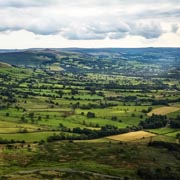|
quote:Sir Keir needs to make the same break with the Left if he is to have any chance of winning in 2024, given the electoral mountain Labour must climb. His tactic at the moment is to commit to nothing, including positions he has previously enunciated on Brexit or wealth taxes. This makes him a tough target for the Tories to hit, and it is showing in the polls, with Labour and Tories now level in several. Telegraph lead editorial three weeks ago e: 17 February 1979. Two hundred thousand troops of the People's Liberation Army invade North Vietnam, starting the Sino-Vietnamese war; the war would last only a month before the Chinese withdraw. Both sides claim victory. ronya fucked around with this message at 18:50 on Oct 13, 2020 |
|
|
|

|
| # ? May 25, 2024 04:54 |
|
yo LC if you want a new av go to the thread in QCS, it's still open. admins said they'd do account features for donations to RAIIN and theres like a 2k dollar surplus due to goon generosity. if you wanna swap now's your shot.
|
|
|
|
jabby posted:Tier 1, Tier 2, Tier 3, and Teir Starmer. Beautiful. £10bn siphoned off into pockets under the guise of COVID supplies now apparently: https://mobile.twitter.com/JolyonMaugham/status/1315929763811389446
|
|
|
|
knox_harrington posted:£10bn siphoned off into pockets under the guise of COVID supplies now apparently: There's a great tweet that for the cost of our broken track and trace system the UK could have given every pub in the land £100,000, paid off all local authority overspends, purchased the entire (functioning) German Track & Trace system and still had £4 billion left over.
|
|
|
|
jabby posted:Tier 1, Tier 2, Tier 3, and Teir Starmer.
|
|
|
|
learnincurve posted:Periodic reminder that this utter loving weapon kept Glenda Jackson in his basement for months on end with no human company while occasionally sending his 11 year old son downstairs to yell “are you still alive” and, I poo poo you not, “happy birthday” through her letterbox. There was an interview with her about her new play and it was heartbreaking. I've not heard this? Any link?
|
|
|
Jaeluni Asjil posted:I've not heard this? Any link? https://www.theguardian.com/stage/2020/jul/26/glenda-jackson-interview-i-am-an-antisocial-socialist quote:Jackson lives in a basement granny flat in Blackheath. Her 51-year-old son – Mail on Sunday columnist Dan Hodges – lives upstairs with his wife and 11-year-old son, Jackson’s only grandchild. Not sure it quite supports a narrative of "Dan Hodges kept his mother locked in the basement" though cause if you read the article it's a basement granny flat, and she does also say "My family live upstairs, so I do have someone looking after me". WhatEvil fucked around with this message at 19:45 on Oct 13, 2020 |
|
|
|
|
WhatEvil posted:https://www.theguardian.com/stage/2020/jul/26/glenda-jackson-interview-i-am-an-antisocial-socialist Hm yes, agreed. Not quite 'imprisonment'! Same thing a lot of older people have been through in the last few months! Most of my over-80 neighbours (approx 15/19 flats) have barely left their flats in the last few months or had visitors until the last few weeks.
|
|
|
|
ronya posted:it's less than 24 hours since Johnson announced the three-tier system... i suppose part of the issue i'm seeing with this move is that this gives the government a way of doing the lockdown while not losing the anti-lockdown electorate, because they can just blame "lockdown labour" an angle we've already seen from kuensberg making it look like they're bowing to pressure from labour probably pisses off the anti-lockdown backbenchers more if anything though
|
|
|
|
Communist Thoughts posted:i suppose part of the issue i'm seeing with this move is that this gives the government a way of doing the lockdown while not losing the anti-lockdown electorate, because they can just blame "lockdown labour" an angle we've already seen from kuensberg I don't think they can plead 'pressure from lockdown Labour' when they command a massive majority and have willfully ignored everything else Labour (and all of the scientists) have said and done all year. They'd try though, sure.
|
|
|
|
stev posted:I don't think they can plead 'pressure from lockdown Labour' when they command a massive majority and have willfully ignored everything else Labour (and all of the scientists) have said and done all year. i think the press can try lol
|
|
|
|
learnincurve posted:Periodic reminder that this utter loving weapon kept Glenda Jackson in his basement for months on end with no human company while occasionally sending his 11 year old son downstairs to yell “are you still alive” and, I poo poo you not, “happy birthday” through her letterbox. There was an interview with her about her new play and it was heartbreaking. You okay?
|
|
|
|
https://twitter.com/SamCoatesSky/status/1316084903990173701 Theresa May suggested stacking SAGE with "business people" so they would stop advising lockdowns.
|
|
|
|
goddamnedtwisto posted:*Sadly deletes "Unconventional traction methods in early London railways.txt" I made that joke in March and again this month as an example of the most… me post possible but it turns out that there’s actually something to the concept so gently caress it, here we go. Sorry, less pics than usual in this one because I’m pretty much just winging it and if something isn’t on the first page of Google Image Search I’m not bothering to go further than that. Unconventional traction methods in early London railways.txt Much like the blank spot in [REDACTED]’s diary every Thursday afternoon, a history of London transport includes ropes, chains, horses, suction, electricity, and of course lots of tight damp holes. Unlike what the Honourable Member for [REDACTED] does in that Pimlico flat though, I can post about it here without [REDACTED] kicking in my door and [REDACTED] like they did to Stephen Milligan. In the beginning… London got its first railway line pretty late. Liverpool and Manchester had had an intercity line for six years, and various mines, quarries had had internal railways even longer, before anyone thought that maybe the biggest city on Earth and the centre of a global empire might want something more than blokes with carts to haul stuff around. The main reason for this tardiness was pretty simple - there just wasn’t the room. London’s streetplan, laid out by Saxons just wandering around, was far too crowded, and the intricate overlapping of ownership and authority of the land meant that any attempt to build a station in the capital would be stupefyingly expensive and stalled in courts for years. The Corporation of London was rather less inclined to help out than their Lancashire equivalents, and so London’s first railway - the London and Greenwich - at no point actually entered London *or* Greenwich, a pre-Victorian Ryanair that actually went from Southwark, south of London Bridge, to Deptford, just outside the similarly-unhelpful Greenwich.  Deptford Station today - even 150 years later you can still see the point where they just went “gently caress it”, although they did eventually extend over into Greenwich itself. The problems didn’t end there though. Although Bermondsey was still pretty rural, the Grand Surrey Canal (also a latecomer compared to the canals of the heartlands of the Industrial Revolution), and multiple roads going into the docks at Rotherhithe and Greenland Dock, along with the aforementioned Deptford Creek, would all need bridging. Contemporary steam locos having about the same pulling power as Michael Gove meant that returning to ground level each time would be impossible, so instead the whole thing was built on an arrow-straight viaduct of over 400 arches, with enough bricks to make a pretty good stab at a pyramid. The other big obstacle to railway-building in London was the lack of a clear actual use for them. The early railways were for hauling bulk goods from mines to smelters to factories, but London had never had much in the way of primary or secondary industry, and what it did have was already based around the river and so didn’t need any bloody Northerners coming down here telling us to put our jellied eels behind a big rolling kettle. The LG&R neatly sidestepped this by noticing that the Liverpool and Manchester Railway was making a decent penny on a side-hustle that they’d not really considered when building it - hauling people. About 10,000 people lived in Greenwich and environs, away from the pollution (and taxes) of London but walking or riding into town every morning. What if they could be the cargo? The expansion of the Greenland Docks into the Surrey Commercial Docks and the rapid urbanisation of Bermondsey, following Watling Street (now the Old Kent Road) from Southwark to Blackheath, put thousands of more potential punters in the area.The commuter was born. However the L&GR used boring old steam engines so is outside of scope here - but the problems it faced with both geographic and legal obstruction are the reasons why early London railways were quite so weird. On a rope The next railway to arrive in sort-of London was the London and Birmingham Railway (it might have got there first were it not for wealthy landowners obstructing it every step of the way because they didn’t want to see filthy industry in their country estates, a situation that definitely hasn’t been repeated every single time someone tries to do anything in the Home Counties). Its terminus in Euston was even more not-in-London than the L&GR, stopping when it reached the New Road, a Georgian M25 laid out to let cattle drivers arriving from the west of town to reach Smithfield without having to negotiate several tons of mobile pie fillings through newly-urbanised Westminster. The importance of this road can be seen by the fact that its modern replacement, the London Inner Ring, is the terminating point for all of the railways from the West and North - Paddington, Marylebone, Euston, St. Pancras and Kings Cross all unable to pass it, despite it leaving them at least a mile from the City itself. (Another reason why all the terminuses cluster along that particular bit of road is that it represented the southern edge of the lands of the Bishop of London, who was all too happy to sell big chunks of very marginal farmland to the railways) One problem with Euston as a terminus is it backs almost directly onto the rolling hills to the north of London. While they were able to reduce the gradient for most of the southern end of the railway by diverting almost 20 miles out to Watford, coming in through the same pass as Brunel’s GWR and the old Roman road that is now the A5, the final stretch from Camden to Euston was an eye-watering 1-in-85, compared to the 1-in-300 that was the limit for the rest of the line and the 1-in-100 that was the steepest part of any of the mainline railways. Chief engineer Robert Stephenson (son of George, of Rocket fame) knew that while his engines *could* make such a climb even fully-loaded, doing so would put them under considerable strain, and would almost certainly require them to stop almost immediately to refuel and take on more water. Additionally, the site at Euston was narrow, with no space for a reversing loop or sidings to let the locos turn around. Stephenson, one of the more practical (and hence least famous) of the great Victorian engineers, simply decided not to bother sending the locomotive down. They had loads of space at the top of the hill for a goodsyard and sidings, so when they reached Camden the loco went off to be serviced at the roundhouse (something something not the only things serviced at the Camden Roundhouse) and the carriages descended under gravity. To avoid every rail carriage in the country eventually being stuck at the bottom of the hill, the goodsyard (now the foundations of most of Camden Market) had a steam engine attached to a loop of rope, and hauled them up to be united with a fresh new loco.  Camden Roundhouse - this etching represents the last time anyone in Camden had a non-bullshit job. Surprisingly it didn’t occur to anyone to let people actually catch the train at Camden - it took another 20 years until the North London Railway, one of the most hilariously inefficient alignments in railway history, put a station on Camden Road, and there might even be another post in the “end-of-a-long-game-of-Railroad-Tycoon” stupidity of the NLR. Stephenson’s next project definitely didn’t neglect the idea of local traffic though. With the L&GR turning a profit even before it fully opened, hauling passengers from Spa Road in Bermondsey to Deptford while the grand terminuses were being built, dozens of chancers sprung up to try and exploit this new market. One of the first was the London and Blackwall Railway (L&BWR to avoid confusion with the London and Birmingham). They certainly had an impressive initial management team - John Rennie, chief architect to the Admiralty and assistant engineer on the Liverpool and Manchester, was the consulting engineer, and architects and engineers from the London docks and canals were pulled in. Running from Minories (the remnants of the moat around the old London walls) to Blackwall, a major shipbuilding area where the Lea entered the Thames, alongside the newly-built Commercial Road, the L&BWR was almost a carbon copy of the L&GR. However the hesitation in building it had left them with even trickier problems than their south London brethren. In particular, the North London Railway were already building a line south from Poplar to the docks on the Isle of Dogs, the Grand Union Canal’s docks at Limehouse would have to be crossed in the shortest distance possible and at a considerable height, and various churches, large warehouses, and main roads would all have to be wriggled around. Rennie laid out a route that included three steep inclines (at Blackwall, Limehouse, and Minories) and sharp turns at Stepney and Blackwall, in contrast to the laser-like L&GR. They also looked to maximise passenger traffic by increasing the amount of stations - 8 in three miles compared to the 6 in 4 miles of the L&GR. The problem that Rennie seemed to overlook was that with the performance of even the best locos of the time (and we’re still at the “no cabin or even guard rails around the drivers” stage of loco technology here) the average speed of the journey would be just 6 miles per hour, barely better than walking and nothing like quick enough to justify the expense compared to a horse-drawn bus. Rennie was dropped and replaced with Stephenson, in the hope that they might persuade his father to magic up some better engines. George - straitjacketed by the fact that the route was already agreed - flattened out the inclines somewhat and managed to persuade the Grand Union Canal to allow the line to skirt the north side of their docks by agreeing to build new wharves for them to replace those being destroyed by the new, much gentler curve than the older southern route across Limehouse Cut. Even with those changes though, the average speed would still be only 10mph (especially as the board promptly decided to plonk another station at Stepney East to interchange with the then-planned Great Eastern Railway).  L&BR and Millwall Extension Railway map. Stephenson already had the solution of course. Cable haulage solved the problem of the inclines and acceleration at least - engines far too large for rail use could be plonked down at each end. However you’re then left with the “driver” being a mile or more from the train itself, making it tricky, to say the least, to make those intermediate stops. The original plan was - like the systems used in quarries and docks - to have the rope running at a constant speed and let the carriages grab it and release it to speed up and slow down. However this puts a pretty hard limit on the speed - while clamps could be made strong enough to accelerate the carriages from 0 to, say, 30 mph, passengers necks couldn’t. Another problem was the almost complete lack of signalling. Many railways still relied on time-based blocks - wait two minutes, then send the next train down, hope that the last one hasn’t stopped or anything. The L&GR, being so straight, simply did without signals and let the drivers drive by sight, meaning it couldn’t operate in the dark or the frequent fog. With curves (and that fog, and London’s inconvenient latitude meaning the peak hours for usage would be in darkness for several months a year), the lack of signalling would make it impossible to run more than one train at a time, which with the aforementioned speed limit put them straight back at “quicker to walk”. The solution was probably the closest to the archetypal Victorian Engineer that Stephenson ever got (like I say, he’s nowhere near as famous as Brunel, Telford or even his own dad because he mostly made things that just worked, simply and reliably, rather than pushing the envelope and failing in spectacular but entertaining fashion). At a fixed time (later synchronised by telegraph) the engines at both Minories and Blackwall would start to accelerate the rope to 30 knots (34 mph - presumably they chose a nautical speed to fit in with the docks around them). The train sitting at Minories would already be attached to the rope, and so would accelerate gently but swiftly with it. As the train approached the first station at Cannon Street Road (no I don’t know why it’s called that either) the rearmost carriage would let go of the rope, and brake to a stop under the control of a guard on a platform at the front. This process would repeat itself at each of the intermediate stations, until two carriages arrived at Blackwall and the engine would be stopped. Each carriage would then reattach itself to the rope, and be pulled back towards Minories. To avoid too much replacement of ruined trousers among the guards, the station at Minories gently sloped towards the buffers, meaning that they could stop at the entrance and slowly roll, rather than trying to stop from full speed without hitting the buffers or the carriages already there (Blackwall instead sloped upwards to save brake wear and improve acceleration on the return journey). The arrival, two years in, of the Wheatstone telegraph, allowed them to turn the rope around as soon as the last carriages arrived at Blackwall rather than waiting. A very, very Victorian solution but a startlingly efficient one. Travel time from Minories to Blackwall was only 15 minutes - 3 minutes quicker than the modern DLR can get from East India (the closest station to the L&BWR terminus, the modern Blackwall station being a few hundred yards further east, inside what was once Thames Ironworks) to Tower Gateway, built on the site of Minories station. Aha, I hear you say, but what about if you didn’t want to go to or from the terminus? What if you wanted to get from West India to Leman Street? Well, so efficient was the scheme that with two tracks running, it took at most 20 minutes to get between any two intermediate stations via the nearest terminal. Alas nothing so perfect could be allowed in the world, and the beautiful on-paper solution run straight into problems from the very start. Unlike on inclines, the mostly-flat railway, and more particularly the curves, meant the cable had to run in a conduit on which it would rub and wear. Rope snaps were common and of course paralysed the entire track. Even with 2, and then 4, ropes it was rare for the system to go more than a week without being bought to a complete halt.  L&BWR terminus at Minories, again showing the last time anyone in the City had a non-bullshit job. Improvements in steam locomotives and signalling meant that it became practical to run a conventional railway, and after 24 eventful years the L&BWR took their ropes and went home. It wasn’t to be their last foray into the world of unconventional traction though… Goodbye Horses The one big drawback of cable haulage is that junctions become impossible, at least without a battalion of Boy Scouts standing by to unknot the ropes every ten minutes. As much as the wear problems, the impossibility of expanding the line other than at each end (the L&BWR did exactly that, managing to move their western terminus to Fenchurch Street, a small physical distance but a massive psychological one, being the first to actually be within the old walls) was the reason they abandoned the cable haulage. They soon built an interchange with the Great Eastern at Stepney, and the NLR at Poplar to increase the amount of freight they could take into their new good yard at Royal Mint Street (coincidentally covering a fair chunk of Goodman’s Field, once a medieval Operation Stack for carts waiting to pass through Aldgate’s customs post). However freight - especially over such short distances - was never their main source of revenue. Passenger revenues were still strong and they expanded north and south to run local services alongside the long-distance expresses being run by the bigger companies. Their big idea though was to cover the Isle of Dogs. The West and East India Docks employed 5,000 men full time and up to 100,000 casual workers, traveling in from all over London, and the newly-built Millwall Docks would employ up to 30,000 more at their busiest. If they could turn even a small amount of them into commuters, they’d have a license to print money. They built the Millwall Extension Railway from a junction near Poplar to a terminus at the southern tip of the island (confusingly known as North Greenwich), with stops at each of the dock entrances on the eastern side.  Dock workers awaiting the “call-on” outside the West India Docks. Most of these poor buggers couldn’t even feed themselves, let alone pay for a train fare. However the West India Docks Company were far less accommodating than the Grand Union Canal had been. Mindful of the risk of fire, the Grand Union Canal had requested that the L&BWR put a roof over their tracks as they passed Limehouse Basin, to catch any sparks from the locomotives. The West India Docks were rather more paranoid though, not least because of the tar stores around the graving docks, basically a massive firebomb waiting to go off. No naked flames were allowed within a hundred yards of them - and the only route the railway could take would be less than 50 yards away. Somehow someone had forgotten the very trick that had started the L&BWR - there’s no reason at all why carriages couldn’t have been cable-hauled along that short section of track - so instead they went even further back in the evolution of transport. Trains would leave Minories and hurtle to Millwall Junction behind the latest state-of-the-art locomotives - then the loco would detach itself and presumably go for a fag in a siding while a team of 8 horses were hitched to the front of the train, haul the carriages a quarter of a mile to South Dock, where another loco would be attached and haul them the rest of the way to North Greenwich. Unsurprisingly the idea never caught on. The Millwall Extension Railway was a flop - the workers in the docks either simply moved into the new housing at Cubitt Town and Millwall, or carried on walking. The only time it saw significant traffic was when Millwall FC were playing at home, and even that went away when Millwall got up to the very first of their Old Tricks and hosed off to Bermondsey, south of the river, stealing the name on the way out and leading to lots of very annoying misunderstandings for the mostly West Ham supporting inhabitants of Millwall (believe me on this). The MER left rather less of a mark than the rest of the L&BWR, most of which is still in use to this day as part of the London Tilbury and Southend line, as well as the DLR. The only part to survive - the viaduct across Millwall Park to the terminus - was briefly reused by the DLR (which took a more westerly route straight through the docks instead of the MER’s eastern route) when it terminated at Island Gardens, but when it expanded south of the river to Lewisham the line instead disappeared into a tunnel just past Mudchute. A section of the viaduct was preserved though, and is now home to a garage (garages naturally appear under railway arches like fungus after rain), the clubhouse for Millwall RFC (club motto - We’ve Got Nothing To Do With Those South London Wankers) and a weirdly long and thin nursery school.  A DLR train making an early attempt at expanding south from Island Gardens before the system even opened. Just up the river, someone else was playing with cable haulage though. Alice in Chains Having the busiest port in the world running right through the middle of your capital city had been a problem for London for a while. The problem was that bridges were impossible downstream of London Bridge, unless they were impractically high to let the masts of sailing ships under them, and while a few bridges had been built upstream, there was no way of traveling between north and south for over half the length of town. Even those near London Bridge had to cope with the truly spectacular congestion on the bridge, even after the medieval one covered in houses had been replaced in the 1820s:  Some Victorian grandee, wanting to get from his wharves in Wapping to his shipbuilder at Rotherhithe, would have to go a mile upstream, take half an hour or more fighting across the bridge, then a mile back downstream. He might take a lighter - a small boat rowed by one of the expert lightermen who were everything from taxi to tugboat in the Port of London - but with hundreds of ships churning up the collected shite of a million people in those pre-Bazalgette days, this was likely to leave him even more stinking than wading through the “exhaust” of the 10,000 or so horses that crossed London Bridge every day. Brunel ( Building on the tunneling shield idea that Brunel had used to dig the Thames Tunnel though, James Greathead realised that a circular shield could itself cut through the clay, with workmen required only to remove the spoil and operate the jacks to push it in, and seal the tunnel with iron lining. Tunnels could be dug quickly and cheaply, and to prove it he decided on a pilot scheme under the Thames, between the Tower and Southwark. Incidentally there’s some weird revisionism going on on Wikipedia at the moment, with them claiming that Greathead’s shield should actually be called a Barlow shield after Whitehead’s former teacher who had obtained a patent on the idea and published a pamphlet about it. This I suspect is certain Wikifiddlers being very invested in the notion that the Ideas Guy is actually as important, if not more so, than the person who actually built the thing and made it work. Barlow’s patent is vague as hell and doesn’t even begin to address the problems of sealing the tunnel, building the lining, or any of the other hundreds of practical problems that needed to be solved to make it work, and there’s no evidence at all that Barlow attempted to rectify that before the patent expired. In fact the patent doesn’t even manage to improve on Brunel’s shield idea (itself borrowed from mining). gently caress him, it’s the Greathead Shield. Anyway, Greathead built his Tower Subway (also coining the word subway, something else Barlow never managed). It was a modest little thing really, a quarter of a mile long and only six and a half feet wide, but it proved the concept and Greathead moved on to the City and South London Railway where he built what went on to become the Northern Line on the Underground. To cash in on the railway mania of the time, they decided to run a “train” through it. In reality, the extremely modest dimensions of both the tunnels and the access shafts at both ends restricted it to a single carriage, seating 16. Mindful of the rope-wear problems on the London and Blackwall, it was instead hauled by chains (the rattling of which only contributed to the claustrophobic atmosphere) before being replaced by the newly-invented steel cable. Unfortunately the penny fare (2p for first class, which let you jump the queue) wasn’t enough to cover even the fuel for the steam engines, let alone the costs of building the thing. The company went bankrupt in just four months despite running at capacity for most of that time. Incidentally, the bankruptcy of the subway led in part to the bankruptcy of the supplier of the steel cable that propelled it. As they were also the cable supplier for the City and South London, which was to run in the same way as the L&BWR, Greathead revisited his plans and instead decided on the most unconventional traction method of them all - electricity. If they’d just been a little better at maths at the Tower Subway, we could all still be running in terrifying fragmenting trains to this day, the bastards. The rails were taken up, gaslights installed, and the subway instead became a pedestrian route, with a toll of half a penny. In that guise it made money hand over fist for another 20 years, until some bastards went and built Tower Bridge which both allowed ships up into the Pool of London and gave a free route between north and south. The subway closed and was sold to the London Hydraulic Power Company (and I could happily derail for another few thousand words about that bit of Edwardian genius), and is now still used for both water mains and telco fibre (the LHPC network was bought up by Cable and Wireless, who ran phone and telex lines down their mains, and is still used by Vodafone to this day). I can’t think of any musical references to suction but please don’t supply them thanks And so onto the most Victorian Engineer method of running a train. The thing about a Victorian Engineer (as opposed to just an engineer who happened to work during the reign of Queen Victoria) is they have that combination of the boundless optimism that the preceding century of the Industrial Revolution (and more or less undisputed mastery of the world) engendered, and the Enlightenment idea that all you needed to do to fix a problem was think in a straight line until you got the solution that leads them to end up in the weirdest possible places by just following simple, logical steps. In this case the thinking went: “Cable haulage is the most efficient way to run a railway because you can use stationary engines of arbitrary size, but cables wear and snag and are generally a pain to deal with” “We can also now dig nice round tunnels for trains to run down that avoid all that buggering about with avoiding street-level obstructions, but a round train in a round tunnel has to push a huge amount of air in front of it every time it moves, which is inefficient” At which point at least three Victorian Engineers no doubt glanced at the piston of a steam engine and had the exact same thought. I’ve already talked about Brunel’s Atmospheric Railway, and I’ll skim over the Croydon Pneumatic Railway which operated on the same principles because gently caress Croydon. No, the true Victorian Engineer experience could be had for a few thrilling weeks at Crystal Palace. You can sum it up with a single picture from the time:  Look closely at the tunnel entrance. See the big doors? Now look at the back of the carriage. See the plug? Yep. The Crystal Palace Pneumatic Railway did away with all the pissing about with sliding pistons and separate vacuum pipes. The carriage *was* the piston. The whole tunnel was airtight, and the train was propelled by a vacuum formed by a steam engine at one end (the engine could also pressurise the tunnel to push the train the other way, but of course this was less efficient because of the air being pressurised in front of the carriage too. It may have only been 800 yards long, but it was a pretty serious bit of kit. It featured both a sharp curve and a steep gradient (1 in *15*, steeper than anything on a main line anywhere in the world at the time by a huge distance, and in fact steeper than most wheelchair ramps to give you an idea), and dealt with them with aplomb. Some people say that it was supposed to be a demonstration to raise funds for another underground railway, this one between Waterloo and Whitehall, but there’s no actual evidence of this other than it being proposed around the same time (there’s no apparent connection between the two that anyone’s been able to find). In fact there’s precious little contemporary information about it all, which kinda ruins the other theory about it - that it was an advertising stunt for the short-lived London Pneumatic Dispatch Company, which intended to build a network of those pneumatic tubes they still use for handling cash in some shops and casinos but at a scale big enough to haul proper cargo. Whatever the purpose of it, it undoubtedly worked, and worked well, a century and a half before Hyperloop started bilking money out of investors of an almost literal pipe dream. In fact its method of operation was actually better than the Hyperloop. It only required a partial vacuum in front of the train (a quick back-of-the-envelope calculation tells me 0.9 bar would provide enough force, on an 8-foot piston (even if the seal wasted a third of the vacuum), to accelerate a 2-ton carriage from 0 to 60 in 40 seconds, slow for Top Gear but quicker than any train currently on the Underground (and of course *blistering* compared to main line trains). Commentators at the time worried that the vacuum could have adverse effects on the passengers (not helped by a popular “science” demonstration of the time being to put frogs and other small animals in vacuum chambers) but 0.9 bar is the pressure you’d feel at 2,000 altitude - *luxurious* compared to the .75 bar you’re at in an airliner at cruising altitude. Therefore you don’t need to worry about pressurising the carriage, or about catastrophic failure of either the tunnel or the piston. Increasing the pressure behind the carriage - easy if you’re already running pumps to create the vacuum - makes things even more efficient. Drag isn’t an issue because air pressure doesn’t get a chance to build up in front of the train as long as the pumps are working. I can only assume that the Powers That Be destroyed it, and all traces of it, from the records as being far, far too awesome to live (either that or someone did some quick calculations about what happens when you put a partial vacuum into a tunnel dug under the water table). Anyway, I’ve now got this off my chest, back to trying to find ever-more-clever ways of not finishing the post about the GPO tunnels that sits in my drafts, staring balefully at me. In conclusion, and to save you all the effort:  : :
|
|
|
|
Communist Thoughts posted:i suppose part of the issue i'm seeing with this move is that this gives the government a way of doing the lockdown while not losing the anti-lockdown electorate, because they can just blame "lockdown labour" an angle we've already seen from kuensberg You're right, I think, on both points. Starmer may be betting - as the Telegraph editorial similarly argues - that voters are disinclined to blame the opposition for Government policies (at least, not an opposition they don't already reflexively dislike for other reasons).
|
|
|
|
OwlFancier posted:I'm not really sure he isn't just being arbitrarily contradictory occasionally. He hated lockdowns not so long ago. He was the one so keen to get the kids back to the plague factories regardless of what "the science" or "the teachers" or "his own education secretary" said. first part ain't really true. "the science" as presented by SAGE has never said to keep schools shut this term, and warned of the long term harm if we did. you can find quotes from Whitty saying when things go pear shaped schools should be the last thing to close again after pubs, etc. they presented a number of models for different re-opening scenarios. the government's gone beyond those and gotten ahead of having the effective testing & contact tracing which SAGE always said would be required. but Labour's always said "get test & trace working" not "gently caress it doesn't matter open them anyway".
|
|
|
|
Gotta say, at the beginning of this year I did not expect that by the end of the year there would be not one but two culture-war-aligned battles dividing both LAB and CON once again.
|
|
|
|
Communist Thoughts posted:i suppose part of the issue i'm seeing with this move is that this gives the government a way of doing the lockdown while not losing the anti-lockdown electorate, because they can just blame "lockdown labour" an angle we've already seen from kuensberg I'm not bothered about him losing that electorate, it seems to skew majorly Tory anyway and we're four years out from the election my issue with him doing it now is that it just underlines the fact that he could have pressed the government on this at any point he chose to but then decided not to, when having done so might have pressured the government into being slightly less poo poo
|
|
|
|
ronya posted:Gotta say, at the beginning of this year I did not expect that by the end of the year there would be not one but two culture-war-aligned battles dividing both LAB and CON once again. The speed with which the Brexit battle lines moved to mask usage and lockdowns should be pretty instructive, really.
|
|
|
|
Borrovan posted:tbh I seriously doubt that they are physically in the Isle of man Skipped a couple of pages so this may have been said already, but there is a 100% chance that someone called Voirrey Coole was born on the Isle of Man, and I'd bet on at least three of her grandparents being born there as well.
|
|
|
|
Wolfsbane posted:Skipped a couple of pages so this may have been said already, but there is a 100% chance that someone called Voirrey Coole was born on the Isle of Man, and I'd bet on at least three of her grandparents being born there as well. And being the same person.
|
|
|
|
Twisto i genuinely hope you're saving these to compile them into a book of weird engineering esoterica
|
|
|
|
The statement I recall was "no ifs or buts" so I'm pretty sure starmer definitely was "no gently caress it open them anyway"
|
|
|
|
Failed Imagineer posted:Twisto i genuinely hope you're saving these to compile them into a book of weird engineering esoterica They're all saved in my Google Docs not for posterity but because I keep getting the muse strike me at various places. When I die I'll pay to have them printed, bound, and thrown at Boris Johnson.
|
|
|
|
Cerv posted:Labour's always said "get test & trace working" not "gently caress it doesn't matter open them anyway". OwlFancier posted:The statement I recall was "no ifs or buts" so I'm pretty sure starmer definitely was "no gently caress it open them anyway" Yeah he actually did say gently caress it open the schools. not "if track and trace is working", not "but only if it's safe". Literally open them, no ifs or buts.
|
|
|
|
And to my kids I bequeath my effortposts on condition they also take my rapsheet
|
|
|
|
Cerv posted:but Labour's always said "get test & trace working" not "gently caress it doesn't matter open them anyway". lol https://www.independent.co.uk/news/uk/politics/kier-starmer-schools-reopen-england-september-boris-johnson-coronavirus-a9672596.html quote:Sir Keir Starmer has warned Boris Johnson it is his duty to ensure schools in England re-open in September as planned. Keith apologism can get hosed. The only times he's opened his mouth to utter an actual solid belief he either quickly u-turns or is shown to have been catastrophically wrong.
|
|
|
|
What's the latest on school-related transmissions in the UK? Anybody know if it's having an impact? There's obviously been tons of cases coming out of Unis and also from pubs/restaurants.
|
|
|
|
|
Increasing chatter that the Northern Ireland Executive is gonna approve a four week circuit breaker lockdown in NI tonight with a two week school closure (with one week overlapping with pre existing half term) There's meant to be an executive meeting at some point today but it's continually being delayed as pre-meeting negotiation between the DUP and SF seems to be quite fiery - I can let you guess what the DUPs thinks of a second lockdown
|
|
|
|
WhatEvil posted:What's the latest on school-related transmissions in the UK? Anybody know if it's having an impact? There's obviously been tons of cases coming out of Unis and also from pubs/restaurants. https://www.bbc.co.uk/news/education-54524291 it's.....not good
|
|
|
|
Julio Cruz posted:https://www.bbc.co.uk/news/education-54524291 It must be regional too, right? Like the majority of new cases generally are in the North West so there must be more children missing school in some areas than others.
|
|
|
|
kustomkarkommando posted:Increasing chatter that the Northern Ireland Executive is gonna approve a four week circuit breaker lockdown in NI tonight with a two week school closure (with one week overlapping with pre existing half term) DUP won't do poo poo without Boris' permission. One of the seven NI deaths in the last 24 hours was an old neighbour of mine. Her husband is in hospital with it at the moment too, he was the one people were saying wouldn't survive it due to his health, its a surprise she died as she was like a sturdy warhorse all her life. Its a bit of a shock to the town, its the first 'covid funeral' here, no wake, no one allowed to mass or grave side, just straight into the grave tomorrow morning. Hopefully will wise some people up in the area. Then again my mother's family is from a seaside resort town in Donegal. Even though they are in a lockdown themselves, our relatives are saying the place is booming with people from NI driving there for a day out. Going into a higher covid area to escape covid! happyhippy fucked around with this message at 21:27 on Oct 13, 2020 |
|
|
|
goddamnedtwisto posted:Unconventional traction methods in early London railways.txt  goddamnedtwisto posted:The original plan was - like the systems used in quarries and docks - to have the rope running at a constant speed and let the carriages grab it and release it to speed up and slow down. However this puts a pretty hard limit on the speed - while clamps could be made strong enough to accelerate the carriages from 0 to, say, 30 mph, passengers necks couldn’t. goddamnedtwisto posted:At a fixed time (later synchronised by telegraph) the engines at both Minories and Blackwall would start to accelerate the rope to 30 knots (34 mph - presumably they chose a nautical speed to fit in with the docks around them). https://www.youtube.com/watch?v=ts7v07lXmTQ dot train
|
|
|
|
If they ever built a vacuum railway it definitely needs a sign over the tunnel saying "YOU ARE NOW ENTERING THE SUCC ZONE"
|
|
|
|
I think Elon Musk has trademarked that.
|
|
|
|
Wasn't Rocket designed by Robert himself, not George?
|
|
|
|
It was, George did a ton of rail stuff too though, including setting the famous 4'8½" / 1.435m gauge, as a nice round number in both unit systems.
|
|
|
|
Seven foot gauge, seven foot gauge. *banging on the table* SEVEN FOOT GAUGE.
|
|
|
|
trypsin posted:Wasn't Rocket designed by Robert himself, not George? Rocket was built by Robert Stephenson and Company but most of the actual detailed design work was done by George (it was an evolution of Locomotion, which itself was an evolution of George's colliery engines). Robert is associated with it because his name was on the company, and he drove it at Rainhill, but his actual input to the design was minimal. Their relationship was interesting because they were much more like business partners than father and son and they tended to split duties and swap around a lot. At the time Robert was concentrating mostly on surveying and civil engineering for the railway companies while George ran the locomotive factory, later on they'd swap and George would start building bridges while Robert worked on simplifying the construction and maintenance of locos for the new mass market.
|
|
|
|

|
| # ? May 25, 2024 04:54 |
|
OwlFancier posted:Seven foot gauge, seven foot gauge. *banging on the table* SEVEN FOOT GAUGE. 
|
|
|



































